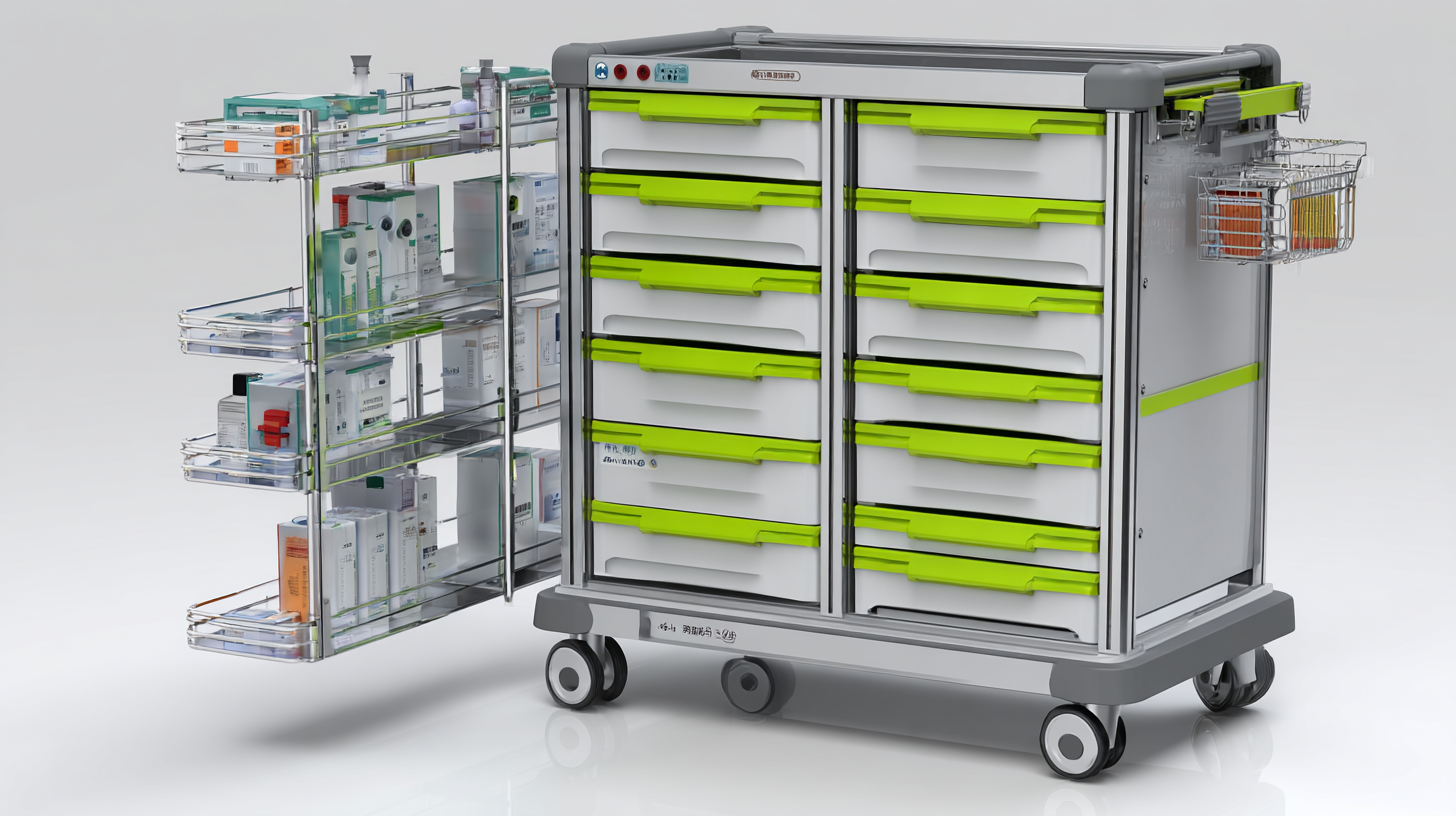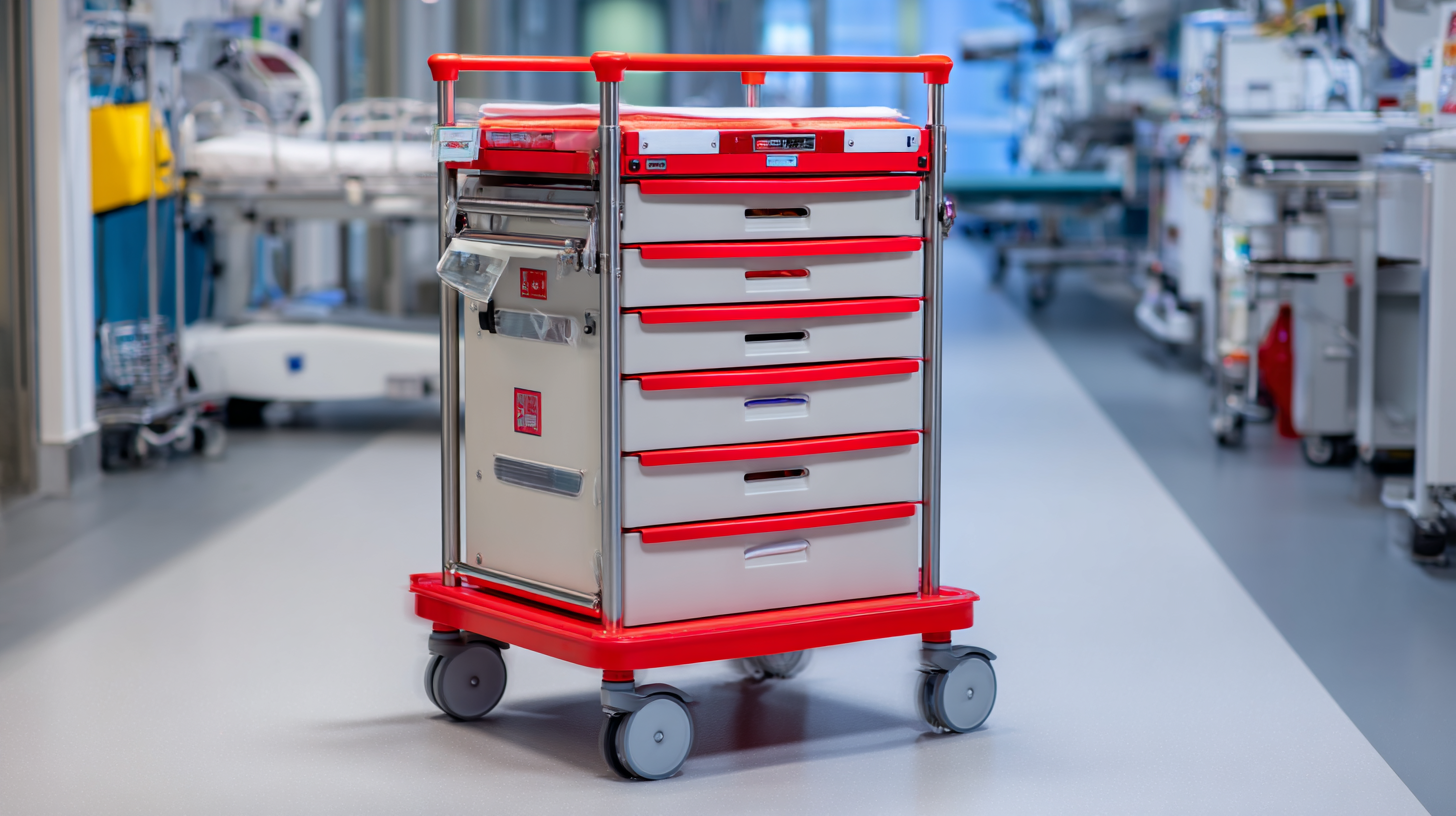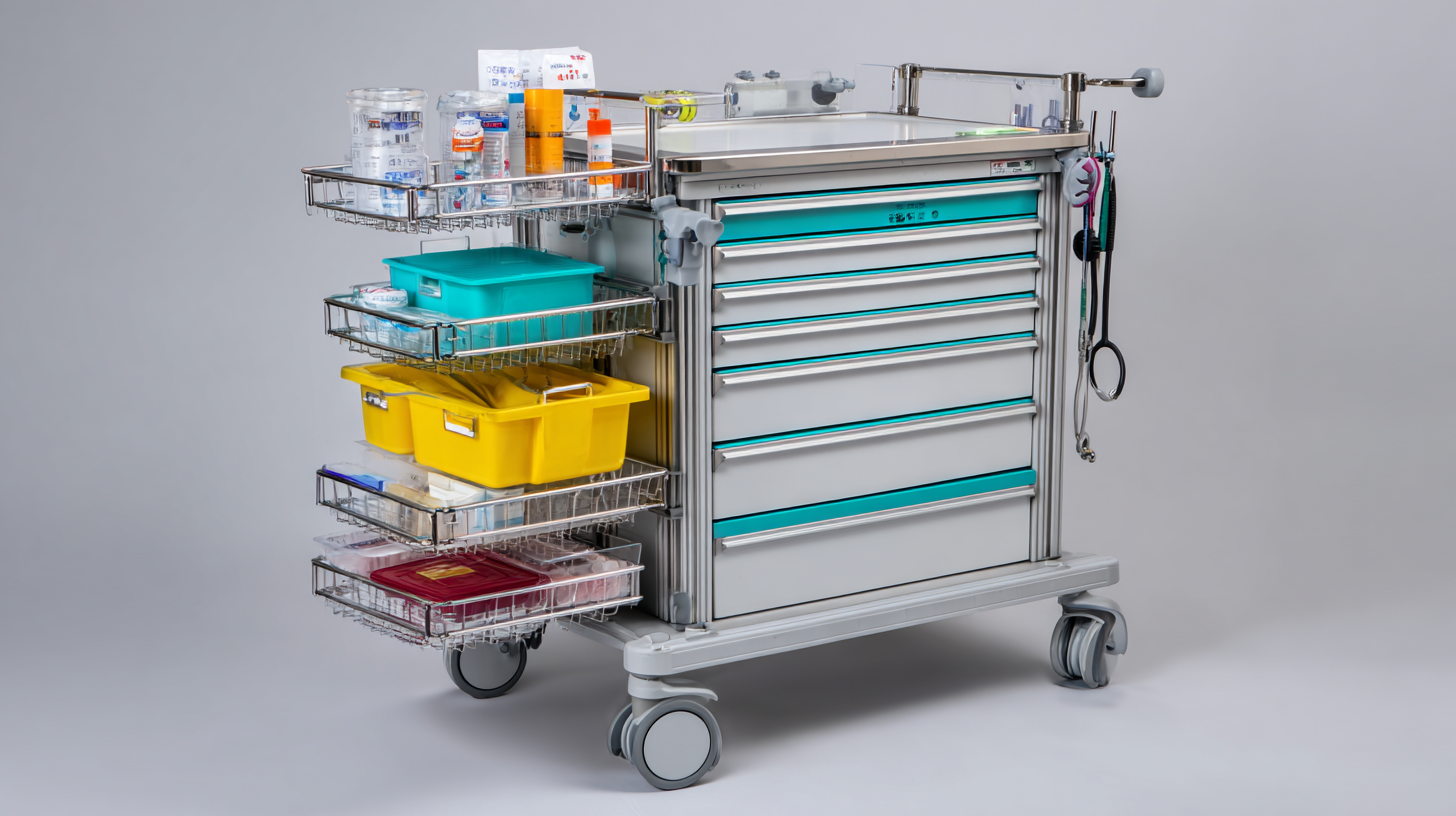Essential Features Checklist for Choosing a Medical Trolley with Drawers
In the fast-evolving healthcare environment, the selection of the right medical equipment has become more critical than ever, particularly when it comes to choosing a medical trolley with drawers. According to a recent report by the Global Market Insights, the medical trolley market is projected to reach USD 4 billion by 2027, driven by the increasing demand for efficient medical logistics and organization in clinical settings. A well-designed medical trolley with drawers not only enhances the workflow for healthcare professionals but also ensures that patient care can be administered swiftly and effectively. As hospitals and clinics strive to adopt advanced medical solutions, understanding the essential features of these trolleys becomes paramount in making an informed purchase decision that aligns with the specific needs of healthcare facilities.

Key Considerations for Medical Trolley Design: Ergonomics and Accessibility
When selecting a medical trolley with drawers, the design's ergonomics and accessibility play a pivotal role in ensuring efficiency and safety in healthcare environments. Ergonomically designed trolleys should be adjustable to accommodate a wide range of users, reducing the risk of strain or injury during daily operations. Features such as height-adjustable handles, rounded edges, and smooth-rolling wheels contribute to a user-friendly experience, allowing healthcare professionals to move swiftly without exerting excessive effort.
Accessibility is another critical factor in the design of medical trolleys. The layout of drawers should be intuitive and easily reachable, permitting quick access to essential supplies. Incorporating transparent or labeled drawers enhances visibility, enabling staff to locate items promptly, which is crucial in emergency situations. Additionally, trolleys should be designed to navigate tight spaces commonly found in medical facilities, ensuring that they can be maneuvered without hindrance. By focusing on these aspects, medical trolley designs can significantly improve workflow and patient care outcomes.
Evaluating Storage Capacity: Optimal Drawer Sizes for Healthcare Needs
When selecting a medical trolley, evaluating storage capacity is paramount, particularly regarding drawer sizes tailored for healthcare settings. According to a recent report by the Healthcare Equipment and Supplies Association, over 70% of hospital staff cite efficient organization of supplies as critical to enhancing patient care. Trolleys equipped with appropriately sized drawers can streamline workflows, reducing the time spent searching for essential items.

Optimal drawer sizes typically range from 12 to 18 inches in depth, allowing for both bulk storage of larger items and quick access to smaller tools. The Journal of Healthcare Management found that trolleys with adjustable drawer compartments improve versatility, accommodating various medical supplies while enhancing overall efficiency. Ensuring that trolleys are designed with ergonomic drawer heights also helps reduce strain on medical staff, leading to improved job satisfaction and decreased injury rates. In environments where every second counts, the right medical trolley with the correct drawer specifications can significantly impact patient outcomes.
Material Durability and Cleanability: Balancing Hygiene with Longevity
When selecting a medical trolley with drawers, material durability and cleanability are paramount, especially in environments where hygiene is critical. Medical trolleys made from high-grade stainless steel or impact-resistant plastics often outperform others in terms of longevity and resistance to microbial growth. According to industry assessments, stainless steel surfaces can significantly reduce bacterial survival rates compared to other materials, making them an ideal choice for healthcare settings. Furthermore, the ability to clean these surfaces with standard disinfectants without compromising their integrity adds to their appeal.
Moreover, the cleaning protocols implemented for these medical trolleys impact not just hygiene but also aesthetic longevity. A recent study highlighted that consistent adherence to tailored cleaning practices can preserve the appearance and functionality of medical equipment over time. As users apply their maintenance habits based on the material properties, selecting a trolley that harmonizes with existing cleaning routines can enhance both user compliance and equipment durability. In this dynamic landscape, understanding the interplay between materials and cleaning techniques is essential for ensuring that medical trolleys remain both functional and hygienic in demanding healthcare environments.
Essential Features Checklist for Choosing a Medical Trolley with Drawers
| Feature | Material Durability | Cleanability | Hygiene Safety | Weight Capacity |
|---|---|---|---|---|
| Stainless Steel | High | Easy | Excellent | 300 lbs |
| Aluminum | Moderate | Moderate | Good | 250 lbs |
| Plastic | Low | Easy | Fair | 150 lbs |
| Wood Composite | Moderate | Difficult | Fair | 200 lbs |
Technology Integration: Smart Features for Modern Medical Trolleys
In today's fast-paced medical environments, the integration of technology into medical trolleys is essential for enhancing efficiency and improving patient care. Modern medical trolleys with drawers are now equipped with smart features that streamline workflows and provide real-time data access. For instance, some advanced trolleys come with built-in electronic health record (EHR) systems, allowing healthcare professionals to quickly reference patient information and update treatment plans on the go. This seamless connectivity ensures that vital information is always at the fingertips of medical staff, reducing the likelihood of errors and enhancing communication among team members.

Moreover, the incorporation of automated systems for medication dispensing and inventory management is revolutionizing how healthcare facilities operate. Trolleys equipped with RFID technology can monitor supplies in real-time, alerting staff when stocks are low or medications are about to expire. This smart feature not only helps in maintaining accurate inventory levels but also promotes patient safety by ensuring that medications are securely stored and accessible only to authorized personnel. Furthermore, many modern medical trolleys now include customizable user interfaces, enabling staff to personalize their workflow and adapt the trolley's functionality to meet the specific needs of their department.
Compliance and Safety Standards: Ensuring Regulatory Adherence in Medical Equipment
When selecting a medical trolley with drawers, adhering to compliance and safety standards is vital. Healthcare facilities must ensure that their equipment meets stringent regulations set by authorized bodies, such as the FDA or ISO standards. These regulations aim to protect both patients and healthcare professionals by minimizing risks associated with medical tools and equipment. A trolley designed in accordance with these compliance requirements not only promotes a safer work environment but also enhances overall operational efficiency in medical settings.
Additionally, a thorough understanding of the specific safety features inherent in medical trolleys is crucial. Features such as lockable drawers, anti-tip stability, and easy-to-clean surfaces play an essential role in ensuring that the equipment meets health and safety standards. Moreover, trolleys should be constructed from materials that are durable and resistant to disinfection processes. These considerations are not merely about regulatory compliance; they directly impact the quality of care provided in medical environments, fostering a sense of trust and safety that is essential in healthcare.
